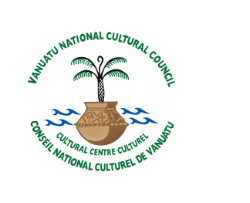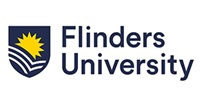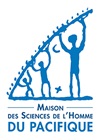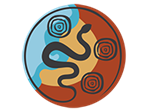Archaeobotany Lab
About us
Archaeobotany is the analysis of plant remains preserved in archaeological sites to reconstruct past vegetation dynamics and understand the relationships woven between human societies and their environment.
At the UWA Archaeobotany Lab our primary goal is to foster collaborative research programs that can meaningfully contribute to long-term climatic histories, enhance our understanding of the vulnerability and resilience of sociocultural-ecosystems, explore management and uses of local flora, delve into the deep histories of traditional ecological knowledge and the intrinsic relationship between people and plants.
We work across 3 main aims:
Resources
- Building and continuously enhancing systematically documented reference collections for the taxonomic identification of archaeobotanical remains with a focus on macro-remains, i.e. carpology (seeds, nuts, fruits) or anthracology (wood charcoal), and an attention to micro-remains (pollen, phytoliths, starch and residues).
- Develop morphological and anatomical databases specifically for archaeobotany in Australia and the Indo-Pacific region.
- Test and develop adapted methodologies for the application of the discipline in our region and the tropics – from fieldwork practices and taphonomy questions to interpretative frameworks.
Capabilities
- Support the sharing of resources and networking opportunities within Oceania.
- Provide teaching, training and supervision in archaeobotany at both undergraduate and postgraduate levels.
Two-way science
- Continuously work towards better integration of Indigenous knowledge and methodologies, two-way (right-way) science within collaborative and community-based research programs in archaeobotany across Oceania.
- Understand and analyse our disciplinary histories, consider ways to adapt and decolonise our methods and practices.
Plants are Country Margo Neale, FIRST KNOWLEDGES SERIES. PLANTS: PAST, PRESENT, FUTURE. (NEALE M. EDITOR, 2022, THAMES & HUDSON)
Our team
- Dr Emilie Dotte-Sarout
-
Emilie is an archaeobotanist specialising in anthracology (wood charcoal analysis) in Oceania and has been pioneering and supporting the implementation of the discipline in the Pacific and Australia for close to 20 years.
She has also been researching the history of archaeology in the Pacific, including through her ARC DECRA project Pacific Matildas: Finding the women in the history of Pacific archaeology.
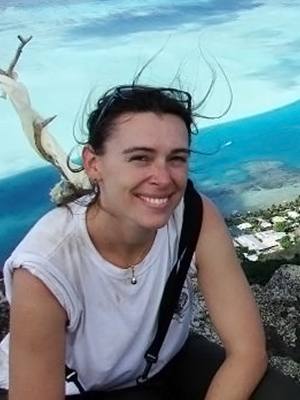
- Dr Chae Byrne
-
Chae has been leading the application of anthracology to Western Australia for more than 10 years, recently completing her PhD on the topic.
She now works as a post-doctoral project manager and continues to establish the discipline in Australia as part of multi-disciplinary and collaborative research projects at UWA.
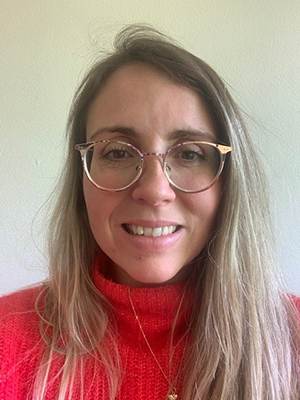
- Dr India Dilkes-Hall
-
India’s research focus is on carpology (food plant remains i.e. seeds, nuts, fruits) in north Western Australia and Island Southeast Asia.
With 13 years archaeological experience, she completed her award winning PhD in 2020, held a prestigious Forrest Foundation Prospect Fellowship at UWA from 2021-2023 and is now a post-doctoral Research Fellow at Griffith University with the Centre for Social Cultural Research, while continuing as an Honorary at UWA.
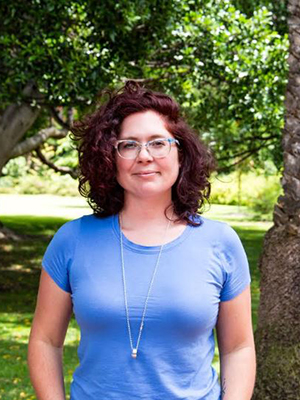
- Dr Judith Field
-
Judith's research has significantly advanced the study of starchy plant residues in Australia and PNG. She has been investigating the role of plants in the dispersal and settlement of people across Sahul particularly starchy economic plants as use-related residues on stone tools, with Richard Fullagar, for the past 3 decades. The study of ancient starch is an emerging and exciting new discipline in archaeology and has the potential to identify the specific plants people were exploiting 10s of thousands of years ago. Judith is an Honorary Associated Professor at UNSW and co-Chief Investigator on the Desert to Sea project, based at UWA.
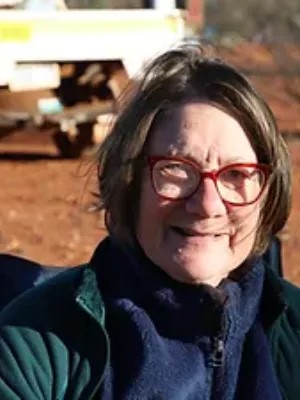
- Dr Richard Fullagar
-
Richard is an internationally recognised specialist in use-wear and residues analysis, looking at the relationships between plant foods and human evolution, and the role of lithic technology in food processing. Stone technology and tool function provide a rare chance to study long-term patterns of human subsistence and settlement in the Pacific - Australian region, in part because stone tools provide an indicator of plants and plant foods. I pioneered high magnification study of use-wear and residues (notably starch grains) in Australia, and set up dedicated laboratories, first at the Australian Museum, and now working with Flinders University and the University of Western Australia.
Associate postgraduate students
- Leia Corrie
- Archaeobotany of fuel and past human-landscape dynamics in Martu Country (Honours, sup. Emilie Dotte-Sarout, Chae Byrne and Jo McDonald)
- Ellyse Tuxford
- Anthracology of Encounters: Makassan hearths on Yanyuwa Country (Honours, sup. Emilie Dotte-Sarout and Chris Urwin)
- Emily Grey (completed)
- Plant-people relationships in Balanggarra Country, northwest Australia: a relational approach to multispecies rock art (PhD, sup. Kevin Kenneally, Sven Ouzman, Martin Porr, and Jo McDonald.)
- Eva Lowe (completed)
- The Tufa Pollen Record of Holocene Murujuga: Implications of Human Occupation (Honours, sup. Emilie Dotte-Sarout, Caroline Mather, Daniel Perrot)
Upcoming events
World Archaeological Congress
22-28 June 2025Darwin
Chae Byrne and Emilie Dotte-Sarout will be co-chairing a session with Isabelle Thery-Parisot, under Theme 1 of the Congress Of People & Trees: New Directions in Anthracology and the Archaeological History of Human-woodlands Interactions. Recent works from the Archaeobotany Lab will be presented here, and in another session we helped develop, co-chaired by Emily Grey and colleagues Multi-Vocality in Archaeobotany: Other Perspectives on How People and Plants Interact.
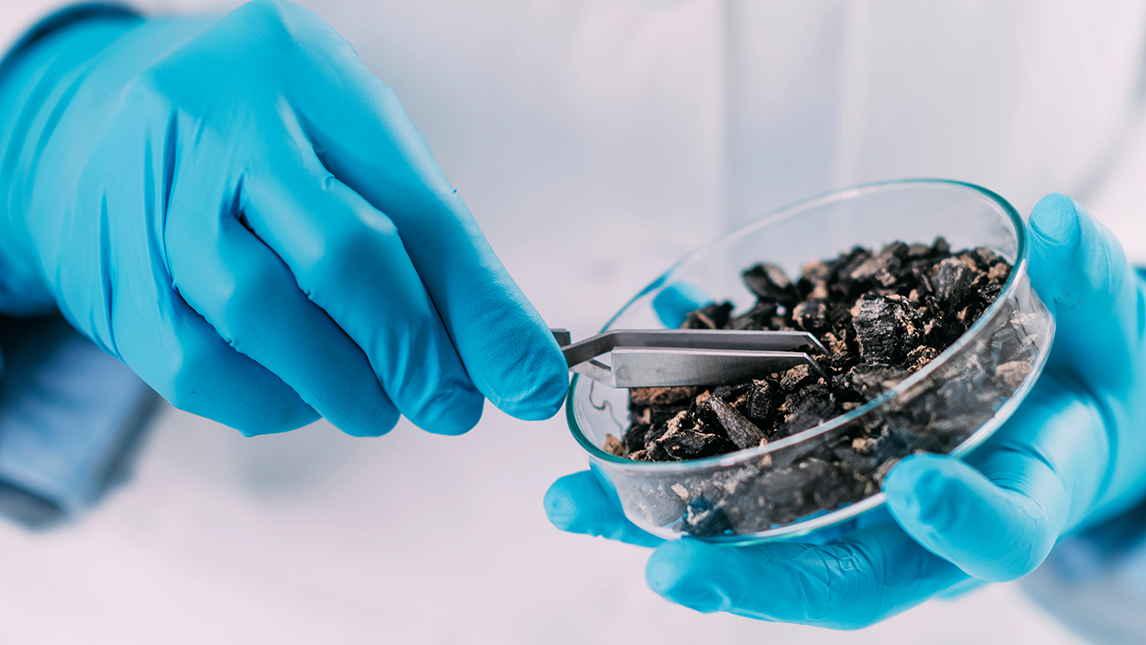
20th Conference of the IWGP (International Work Group for Palaeoethnobotany)
21-26 July 2025Groningen, The Netherlands
The Archaeobotany Lab team is excited to have been heavily involved in the drafting of a specific session on 'Archaeobotany beyond binary oppositions: Traditional Ecological Knowledge & fresh ways of understanding past plant-people interaction'. We hope to be able to travel to Europe to present our papers in this and other sessions.
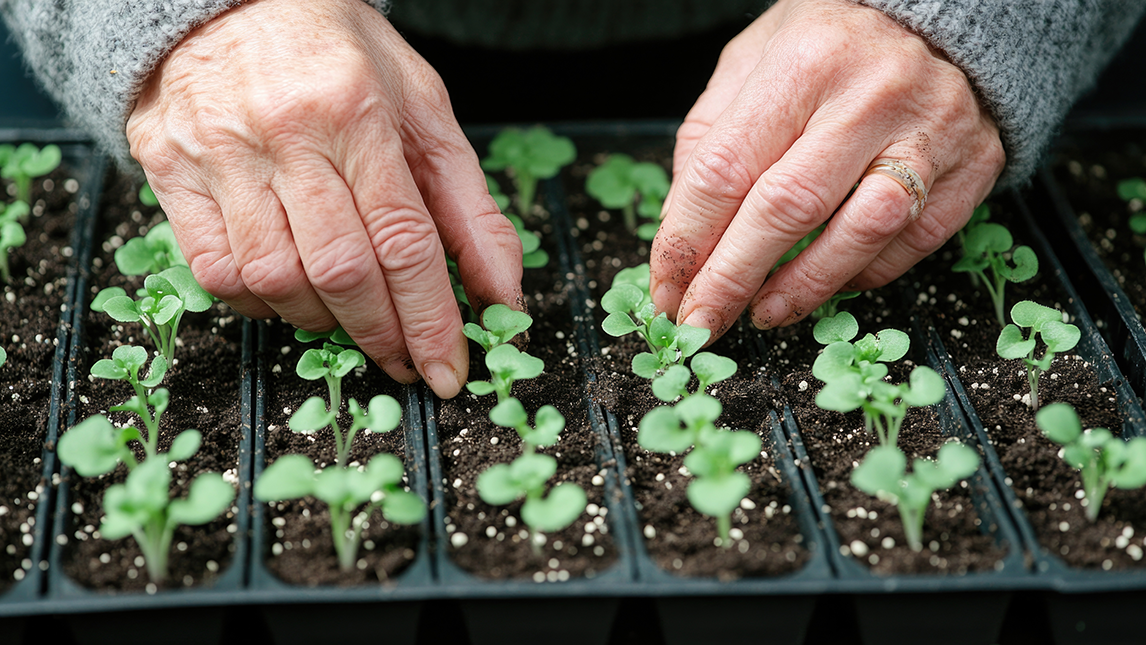
Past events
- 2024 Events
-
Society for American Archaeology Annual Meeting | 17-21 April 2024
India Ella Dilkes-Hall presented preliminary results from carpological analyses and experimental studies conducted in East Kalimantan in the session 'Advances in macrobotanical and microbotanical archaeobotany'.
- 2023 Events
-
Developing anthracology in Oceania: review and perspective from last 10 years | June 2023
From underground to the canopy: Meeting between archaeology and botany
Emilie Dotte-Sarout gave an online seminar about the development of anthracology in the Pacific over the past decade as part of the Archaeology-Botany Workshop and public event organised at the Vanuatu Cultural Centre and Alliance Française in Port-Vila, in June 2023, thanks to the AFRAN seed-funding received.
The Missing Plants: emerging methodological approaches to vegetal remains in archaeology | June 2023
Emilie Dotte-Sarout was invited to present on the application of anthracology in the Pacific islands as part of this international meeting on new archaeobotanical approaches organised by the University of Cantabria, Spain.
Australian Archaeological Association 2023 Conference | 5-8 December 2023
Chae Byrne and Emilie Dotte-Sarout presented on recent anthracological studies and epistemology questions for archaeobotany in the Pacific and Australia at the annual conference of the Australian Archaeological Association.
- 2022 Events
-
22nd Congress of the Indo-Pacific Prehistory Association | November 2022
Dilkes-Hall presented her postdoctoral research on ‘Plants Other Than Rice’ From Liang Jon, East Kalimantan, Indonesian Borneo, at a special session on archaeobotany and the emphasised the need to move beyond the orthodox focus on rice in Southeast Asian archaeology and consider plants beyond the realm of agriculture.
Au Coeur du Triangle Polynésien. Bilan et perspectives de l’archéologie polynésienne | November 2022
Emilie Dotte-Sarout was invited to present a synthesis of anthracological works carried out in Polynesia over the last decade, at this international conference assessing the state of Polynesian archaeology and organised by the Centre International de Recherche Archéologique sur la Polynésie, in Tahiti.
Anthracology WorldWide. Diversity of contexts and environments: Applications, limits and advances | December 2022Emilie Dotte-Sarout was invited to participate in this fantastic international workshop held by the CEPAM (Cultures and Environments CNRS-University of Nice Research laboratory) in Nice, France, to present on recent developments in Australia and the Pacific and discuss networking, sharing and collaboration opportunities with international colleagues.
The Persistent Acacia and the Important Role of Anthracology in Australian Archaeology. Australian Archaeology Association Conference | December 2022
Chae Byrne presented a synthesis of her PhD research and most striking results in relation to the role of wattle in the archaeological history of Western Australia.
Students
We are always eager to support new students in archaeobotany and have a number of emerging and current projects in collaboration with colleagues at UWA Archaeology and other institutions, both nationally and internationally.
If you are interested in becoming involved, please contact us below.
Hear about our research
History rewritten - 31,000 year old amputation discovered
A team of Indonesian and Australian archaeologists including academics from Griffith University and The University of Western Australia have unearthed the earliest known evidence of a surgical amputation, dating back at least 31,000 years, in a limestone cave on the island of Borneo.
Projects
- Marra Anthracology and Archaeobotany
-
As part of the newly funded ARC Linkage project “Investigating the archaeological values of Marra cultural heritage sites” (LP220100143 ; 2024-2028), collaborative anthracological and archaeobotanical research will be implemented. This will contribute to the project’s aims investigating the archaeological landscape of Limmen National Park, on Marra Country, and informing the creation of a cultural heritage management plan. The project will combine contemporary Aboriginal knowledge with archaeological and anthropological data to understand the meaning of the archaeological record for Marra people today.
This project is carried out by Emilie Dotte-Sarout in collaboration with lead CI Liam Brady (Flinders University), and John Bradley (Monash University), Amanda Kearney (University of Melbourne/San Diego State University), Jeremy Ash (Monash University), Cassandra Rowe (James Cook University), Daryl Wesley (Flinders University), Shaun Evans (li-Anthawirrayarra Sea Rangers), David Barrett (li-Anthawirrayarra Sea Rangers). It receives funding from the ARC (LP220100143) and Parks & Wildlife Commission of the Northern Territory, McArthur River Mine Community Benefits Trust, and Mabunji Aboriginal Resource Indigenous Corporation.
- Unearthing the significance of archaeobotany in Australia to support in the preservation of North WA’s Indigenous Ecological Knowledge
-
This project proposes two main aims. The first being the compilation of wood descriptions – resulting from Chae Byrne’s PhD – into a wood atlas. The atlas will hold detailed anatomical descriptions and micrographs of the species collected from Katjarra (the Carnarvon Ranges) to be returned to the Birriliburu IPA Community. It will include recorded stories and ethnobotanical knowledge relating to fire and wood collection that the community may wish to record through ethnobotanical consultation. The second aim is to assist in the growth of archaeobotanical analyses in Western Australia by advancing starch residue techniques. This will include the creation of a Western Australian starch reference collection.
This research is led by Chae Byrne in collaboration with Birriliburu IPA community members, and funded through the Berndt Research Foundation’s Early Career Research Award, 2023.
- Desert People: Australian Perspectives - archaeobotany
-
This research is part of the Desert People Project (FL220100046, CI Prof Peter Veth). This five-year ARC Laureate Project aims to foster collaboration between innovative scientific approaches and Indigenous knowledge to deepen our understanding of the 60,000-year custodianship of Australian deserts. Specifically, the archaeological focus is on the Ningaloo coast, Pilbara, and Western Desert regions. The program actively engages with ten Aboriginal Corporations across Australia's Northwest. Archaeobotany plays a crucial role in the Desert People Project, through the analysis of various palaeobotanical records, including anthracology, residues from grinding stones/patches, and pollen extracted from excavated sediment. These sources provide an abundance of information regarding the interactions between people and plants in the past, delivering some of the regions first local paleoenvironmental data. The research will explore patterns of resource use (in response to climate change), past people’s mobility in the landscape and how knowledge of the past is meaningful for the future.
This research is carried by Chae Byrne, in collaboration with Laureate Fellow Peter Veth (Archaeology, UWA) and with Richard Fullagar (Archaeology, UWA), Judith Field (Archaeology, UWA), Tim Cohen (University of Wollongong), Wendy Reynen (Archaeology, UWA) and Kane Ditchfield (Archaeology, UWA).
- Domestic uses of fire in past and present Australia
-
Bringing together archaeological scientists, linguists and First Nations language experts, this project innovates a style of collaboration where language knowledge and lexicography play a pivotal role in understanding archaeological features from past Aboriginal settlement sites: more specifically domestic uses of fire. Despite their cultural centrality, everyday practices and techniques around fire in ‘camps’ (i.e., hearths) have not been systematically documented. Building upon a pilot study that involved 10 Australian languages, this project investigates an additional 30 languages from across the continent, extracting frequent lexical categories for functions and techniques related to fire, including potential regional contrasts and historical developments; and aims to test the application of these new frames of interpretation to anthracological and archaeological datasets.
This project is funded through a 2022 Australian Linguistic Society Research Grant, and carried out by Emilie Dotte-Sarout in collaboration with Ingrid Ward (Archaeology, UWA), Luisa Miceli (Linguistics, UWA), Maïa Ponsonnet (Laboratoire Dynamique du Language, CNRS).
- People-plant relationships and medico-socio-cultural evolution in late Pleistocene tropical rainforests
-
The overarching aims of this research program are to identify and document economic plant use and investigate medico-socio-cultural development amongst foraging populations occupying tropical rainforest environments in the deep past – most specifically on the island of Borneo. This research is part of recent and ongoing ARC projects “The unknown ‘Ice Age’ artists of Borneo” (FT170100025) and “Early art, culture, and occupation along the northern route to Australia” (DP220100462) that have uncovered 40,000 years old rock art and evidence for the earliest known surgical amputation on a 31,000 years old primary burial. Pharmaceutical and medicinal aspects of this complex surgery probably benefited from the use of the exceptionally rich botanical resources available from the equatorial tropical rainforests of eastern Borneo. However, only through the careful application of archaeobotanical techniques can these sophisticated people-plant relationships begin to be understood.
This research is carried out by India Ella Dilkes-Hall, in collaboration with Maxime Aubert (Griffiths University), Tim Maloney (Griffiths University), Adam Brumm (Griffiths University), Andrea Jalandoni (Griffiths University) and other partner investigators. It has been funded by the ARC (FT170100025 to Maxime Aubert and DP220100462, lead CI Maxime Aubert) and the Forest Research Foundation (Fellow India Dilkes-Hall), with UWA providing in-kind support.
- Fire and plants: Traditional Ecological Knowledge & Western Science from the Desert to the Sea
-
“Fire and Plants” is the Research Node 2 of the larger multi-disciplinary ARC Linkage Project “Desert to the Sea: Managing Rock Art, Country and Culture”, which aims to understand how rock art sites were part of people’s ngurra and how people knew and managed this landscape, combining traditional ecological knowledge and novel scientific approaches (including anthracology), as well as developing management regimes and formal certification for Indigenous rangers. Research node 2, Fire and Plants, wants to understand the ecology, biodiversity and land management practices of Country, especially how people have used, transformed and cared for local vegetation, through a collaboration between researchers, rangers and Traditional Owners of Murujuga National Park, the Martu Native title determination, and Birriliburru Indigenous Protected Area in the arid Australian northwest (Western Desert to coastal Pilbara regions).
This project is carried by Chae Byrne and Emilie Dotte-Sarout, in collaboration with lead CI Jo McDonald (Archaeology, UWA) and, for research Node 2, Stephen Van Leeuwen (Curtin University), Richard Fullagar (Archaeology, UWA), Judith Field Archaeology, UWA), Pauline Grierson (Biological Sciences, UWA), Casey Ryan (Biological Sciences, UWA).
- Of Charcoal and trees: Anthracology and wood analysis of Kanak settlement sites
-
Under the project ‘Archaeology of communities, communities in archaeology’ funded by the Australian Academy of Social Sciences and led in close collaboration with the Institut d’archéologie de la Nouvelle-Calédonie et du Pacifique (IANCP), this project is working on archaeological sites identified by communities and cultural heritage management surveys in the northern Grande Terre of New Caledonia, in consultation with traditional owners. It focuses on precolonial Kanak settlement patterns and archaeobotanical analyses to better understand past management practices of the vegetation and co-adpatation on an island which is one of the main hotspots of plant biodiversity on the planet.
This project is carried by Emilie Dotte-Sarout, in collaboration with Jean-Marie Wadrawane and the team of the IANCP, and the Northern Province of New Caledonia, building on continuous collaboration over the past 20 years.
- Anthracology in Central-Eastern Polynesia
-
Through a number of various research contracts and collaborative funding, this research program has been working to implement anthracology in the islands of French Polynesia, from the Society Islands to the Gambier and, more recently, the Tuamotu archipelagoes. In particular, we aim to compare human impact and vegetation resilience, as well as traditional Ma’ohi management practices, between high islands and atoll environments. As part of a new larger multi-disciplinary project aiming to reconstruct the history of Eastern Polynesian atolls and their ecosystems over the last millennia, anthracological and archaeobotanical analyses will be conducted to investigate how atolls’ communities transformed and adapted to such seemingly hostile environments.
This research is carried by Emilie Dotte-Sarout in collaboration with Guillaume Molle (Australian National University and Centre International de Recherche Archeologique en Polynesie), Eric Conte (University of French Polynesia and CIRAP), Louis Lagarde (University of New Caledonia), Vahine Rurua (CIRAP), Gabrielle Traversat (UMR TempS), Francois Fournier (University Aix-Marseille), Matiu Prebble (University of Canterbury), Aymeric Hermann (CNRS UMR Temps), Jacques Vernaudon (UPF); Jennifer Kahn (College of William and Mary, USA) and Patrick Kirch (University of Hawaii). It is funded by the Agence Nationale de la Recherche (AAPG2023; CE27 2024-2028) and previously received funding from the US National Science Foundation.
- Developing archaeobotany in Vanuatu
-
Islands have long been used as ecological models for world ecosystem processes, especially in relation to human impact and sustainable management of natural resources. Still, systematically collected and analysed palaeoenvironmental datasets from the Pacific remain rare. Those that also include Indigenous perspectives, ethnobotanical information and traditional ecological knowledge, even more so. Through seed-projects, post-graduate supervision and international collaborations, we seek to support the development of anthracology and archaeobotany more generally in Vanuatu.
This research program has received funding from the Australian-French Association for Research and Innovation (AFRAN) in 2023 and is carried by Emilie Dotte-Sarout in collaboration with PhD candidate Julien Ponchelet (Sorbonne University), CNRS Aymeric Hermann and Frederique Valentin (UMR Temps), Michelle Elliott (UMR ArScAn), Stuart Bedford and Matthew Spriggs (Australian National University), Edson Willie, Lucas Saravanu, Philip Iarawai, Siri Seoule (Vanuatu Cultural Centre).
- Exploring grindstones and culturally important plants in northwest Australia - reference collections and ethnobotany in the east Kimberly
-
This project entails working with Traditional Owners in Balanggarra Country, to record Traditional Ecological Knowledge and create a reference collection of plant residues for future archaeobotanical analysis of grindstones in the east Kimberley. This collection will focus on Culturally Important Plants, or plants which have been valued in the east Kimberley for their dietary, medicinal, spiritual, and material uses. In particular, it will investigate their potential phytolith signatures, as the most robust and promising types of plant microremains, for the purposes of informing future grindstone residue analyses in the East Kimberley region.
The research is carried out by Dr Emily Grey, who was awarded a 2024 Berndt Foundation Early Career Researcher Grant, in collaboration with Balanggaraa Traditional Owners and Rangers, the 2024 Balanggarra Women’s Forum, and Dr Judith Field.
News
Connecting the Past to the Present
An Archaeobotanical Journey at Katjarra
Read moreFire, plants and charcoal: experimental work with Birriliburu
Chae Byrne and Emilie Dotte collected botanical samples from more than 20 trees and shrubs around Yamada camp
Read moreNew study finds wattle used for over 50,000 years in Western Desert
Research has found that wattle has a cultural history that spans across 50,000 years
Read moreResources
- Lab equipment
-
Archaeobotany equipment in the Archaeology Lab includes:
- Drying ovens
- Fume hood
- Sorting benches and equipment (nested geological sieves, sinks, etc)
- Macrobotanical and wood charcoal reference collections (see below)
- Filemaker pro searchable anatomical and morphological databases for taxonomical identification (see below)
- Wood identification and archaeobotany references library
- AmScope stereo-microscopes (macroremains, residues and use-wear analysis)
- Olympus high magnification microscope, reflected and transmitted light (pollen, micromorpho and charcoal analysis)
- Leica stereo-microscope with photography software (macroremains, residues and use-wear analysis; teaching & training)
- Nikon high magnification microscope with transmitted and reflected light, fluorescence capability, live video on large screen and photography/image analysis software (pollen, micromorpho, residue and charcoal analysis; training and teaching)
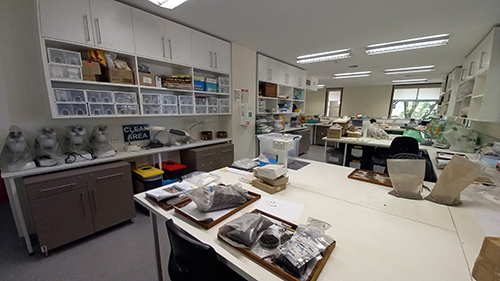
- Reference collections and anatomical/morphological databases
-
All our reference collection specimen are accompanied by a reference botanical voucher identified by botanists or ecologists and Traditional Owners (field or herbarium collaboration).
Collections are conducted with relevant licensing and permits, including ethics, as detailed in publications and Byrne 2022, Dilkes-Hall 2020.
Specimen are charred under controlled conditions with half preserved unburnt except when not possible (lack of material).
Specimen are then observed under microscopes for photography and anatomical or morphological description, recorded in a systematic database (see below).
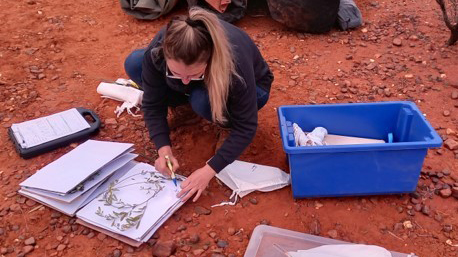
1. Australia wood charcoal reference collection:
- We have close to 250 specimens from more than 200 woody taxa collected throughout Western Australia (including the Southwest, Midwest, Pilbara, Western Desert, Kimberley, and Carnarvon regions).
- The collection holds 39 different botanical families; Fabaceae and specifically Acacia represent ¼ of the collection, while Myrtaceae and Proteaceae families represent 16% and 10% of the collection, respectively.
- We focus on Acacia, collecting and describing as many different species as possible, but also duplicate specimen from different individuals of the same species (i.e. Acacia aneura) in various locations across WA.
2. Pacific wood charcoal reference collection:
- We have more than 200 specimen from 180 taxa, including some monocotyledon and Cyatheales stems, tuber, and carpological samples.
- Collection sources focus on New Caledonia (Grande Terre) and French Polynesia islands.
- There are 63 families represented. Euphorbiaceae, Myrtaceae and Rubiaceae are the most frequent families, each accounting for more than 5% of the collection, mirroring the diversity of the flora.
- We focus on non-endemic, pan-Pacific and horticultural species (70% of the collection) to support regional application.
3. Southeast Asia carpological and wood charcoal reference collection (in construction)
4. Western Australia carpological collection
- The collection contains more than 250 specimens from close to 200 different taxa, mainly sourced from the Kimberley and North-western Australia.
- There are 51 families represented, with Fabaceae (notably Acacia) and Myrtaceae being the most frequent families in the collection, each comprising around 10%. This is followed by Proteaceae, Poaceae, Moraceae, Malvaceae and Combretaceae taxa.
- We focus on edible fruits, seeds, and other elements, including tubers. We collected a number of duplicates as well as whole and processed (fragmented) specimens.
- Databases
-
- We follow the IAWA lists of microscopic features for hardwood and softwood identification in our custom-made FileMaker Pro database to record reference collection descriptions that can then be queried for archaeobotanical identification.
- A similar process is used for carpological and other non-woody specimen.
- Currently, 90% of our reference collection samples have been processed and described in the databases (as a continuously growing endeavour).
- Databases are organised by regions (Australia, Pacific, Southeast Asia) and types/taxonomical order (i.e. anthracology-dicot/monocot/cyatheales; carpology-seed/fruits; etc.).
- Student theses
-
In addition to PhD theses and current research projects listed above, a large portion of this work has been realised as part of UWA students’ honours research projects, and their theses remain important references identified in the reference collections and databases records.
2012. Taylor (Byrne), Chae. Charcoals as indicators of ancient trees and fuel strategies : An Application of Anthracology in the Australian Midwest. Unpublished Honours thesis, UWA School of Social Sciences.
2013. Hudson, Philippa. ADDING FUEL TO THE FIRE: RECONSTRUCTING THE PALAEOENVIRONMENT AND PAST FUEL WOOD STRATEGIES THROUGH THE APPLICATION OF ANTHRACOLOGY AT KALGAN HALL, SOUTHWESTERN AUSTRALIA. Unpublished Honours thesis, UWA School of Social Sciences.
2014. Dilkes-Hall, India Ella. An Archaeobotanical Analysis of Macrobotanical Remains at Riwi in the South Central Kimberley Region, Western Australia. Unpublished Honours thesis, UWA School of Social Sciences.
2021. Runciman, Helen. A Colonial Garden? Archaeobotanical and Documentary Research at the Artillery Drill Hall, Fremantle, Western Australia. Unpublished Honours thesis, UWA School of Social Sciences.
2021. Walsh, Matthew. THERE’S SOMETHING ABOUT MARNUNGGURRUN: Wood Charcoal as an Indicator of Earth Ovens and Anthropogenic Fire Regimes at Walanjiwurru 1, Marra Country. Unpublished Honours thesis, UWA School of Social Sciences.
Publications
- Publications
-
Collaborative anthracology and cultural understandings of wood charcoal in Marra Country (northern Australia).
Walsh, M., Dotte-Sarout, E., Brady, L.M. et al., August 2024, In: Archaeol Anthropol Sci 16, 148.How Linguistic Data Can Inform Archaeological Investigations: An Australian Pilot Study Around Combustion Features.
Ward, I., Ponsonnet, M., Miceli, L., Dotte-Sarout, E. & Rustandi, J., 1 Jan 2023, In: Open Archaeology. 9, 1, 20220312.Inherited age of floating charcoal fragments in a sand-bed stream, Macdonald River, NSW, Australia: Implications for radiocarbon dating of sediments
Blong, R., Fryirs, K., Wood, R., King, F., Schneider, L., Dotte-Sarout, E., Fallon, S., Gillespie, R., Chen, Q. & Esmay, R., Sept 2023, In: Holocene. 33, 9, p. 1154-1159 6 p.Remnant peat deposit provides clues to the inundated cultural landscapes of Kepa Kurl, southwestern Australia
Ward, I., Guilfoyle, D., O'Donnell, A., Byrne, C., Macphail, M. & Hopper, S. D., Jun 2023, In: The Holocene. 33, 6, p. 671-684 14 p.A late Pleistocene to Holocene archaeological record from East Kalimantan, Borne
Maloney, T. R., Dilkes-Hall, I. E., Setiawan, P., Oktaviana, A. A., Geria, I. M., Effendy, M., Ririmasse, M., Febryanto, Sriputri, E., Priyatno, A., Atmoko, F. T., Moffat, I., Brumm, A. & Aubert, M., 1 Feb 2022, In: Quaternary Science Reviews. 277, 107313.The dependable deep time Acacia: Anthracological analysis from Australia's oldest Western Desert site
Byrne, C., Dotte-Sarout, E., van Leeuwen, S., McDonald, J. & Veth, P., Dec 2021, In: Journal of Archaeological Science: Reports. 40, 103187.Timorese archaeobotany: An anthracological pilot study at the late Holocene Lepu-Kina rockshelter, Atauro Island, East Timor
Ribeny, A., Dotte-Sarout, E. & Galipaud, J. C., 2021, In: Australian Archaeology. 87, 2, p. 190-209 20 p.Archaeobotany of Aboriginal plant foods during the Holocene at Riwi, south central Kimberley, Western Australia
Dilkes-Hall, I. E., Balme, J., O’Connor, S. & Dotte-Sarout, E., 1 May 2020, In: Vegetation History and Archaeobotany. 29, 3, p. 309-325 17 p.Evaluating human responses to ENSO driven climate change during the Holocene in northwest Australia through macrobotanical analyses
Dilkes-Hall, I. E., Balme, J., O’Connor, S. & Dotte-Sarout, E., 1 Dec 2020, In: Holocene. 30, 12, p. 1728-1740 13 p.Island survival: The anthracological and archaeofaunal evidence for colonial-era events on Barrow Island, north-west Australia
Byrne, C., Dooley, T., Manne, T., Paterson, A. & Dotte-Sarout, E., 1 Apr 2020, In: Archaeology in Oceania. 55, 1, p. 15-32 18 p.'Doog girndi'. Using experimental archaeology to understand the archaeobotanical record: an investigation of mid-Holocene Vitex glabrata fruit processing in Gooniyandi Country, northwest Australia
Dilkes-Hall, I., Davis, J. & Malo, H., 2019, In: The Artefact. 42, p. 3-16 13 p.Macrobotanical remains and preservational bias: an example from Moonggaroonggoo, Gooniyandi Country, Western Australia
Dilkes-Hall, I. E., 4 May 2019, In: Australian Archaeology. 85, 2, p. 210-214 5 p.People-plant interaction and economic botany over 47,000 years of occupation at Carpenter’s Gap 1, south central Kimberley
Dilkes-Hall, I. E., O’Connor, S. & Balme, J., 2 Jan 2019, In: Australian Archaeology. 85, 1, p. 30-47 18 p.Wood charcoal analysis in tropical rainforest: A pilot study identifying firewood used at toxic nut processing sites in northeast Queensland, Australia
King, F. & Dotte-Sarout, E., 15 Mar 2019, In: Vegetation History and Archaeobotany. 28, 2, p. 163-185 23 p.Understanding archaeobotany through ethnobotany: an example from Gooniyandi Country, northwest, Western Australia
Dilkes-Hall, I., Maloney, T. R., Davis, J., Malo, H., Cherel, E., Street, M., Cherrabun, W. & Cherel, B., Dec 2019, In: Journal of the Anthropological Society of South Australia. 43, p. 4-32 29 p.The curious case of Proteaceae: macrobotanical investigations at Mount Behn rockshelter, Bunuba country, Western Australia
Whitau, R., Dilkes-Hall, I. A., Vannieuwenhuyse, D., O’Connor, S. & Balme, J., Apr 2018, (E-pub ahead of print) In: Australian Archaeology. 84, 1, p. 19-36 18 p.Ancient woodlands of Polynesia: A pilot anthracological study on Maupiti Island, French Polynesia
Dotte-Sarout, E. & Kahn, J. G., 1 Nov 2017, In: Quaternary International. 457, p. 6-28 23 p.Evidence of forest management and arboriculture from wood charcoal data: an anthracological case study from two New Caledonia Kanak pre-colonial sites
Dotte-Sarout, E., Mar 2017, In: Vegetation History and Archaeobotany. 26, 2, p. 195–211 17 p.X-ray computed microtomography and the identification of wood taxa selected for archaeological artefact manufacture: Rare examples from Australian contexts
Whitau, R., Dilkes-Hall, I., Dotte-Sarout, E., Langley, M. C., Balme, J. & O'Connor, S., 1 Apr 2016, In: Journal of Archaeological Science: Reports. 6, p. 536-546 11 p.Not just carbon: assessment and prospects for the application of anthracology in Oceania
Dotte-Sarout, E., Carah, X. & Byrne, C. K., Apr 2015, In: Archaeology in Oceania. 50, 1, p. 1-22Charcoals as indicators of ancient tree and fuel strategies: An application of anthracology in the Australian Midwest
Byrne, C., Dotte-Sarout, E. & Winton, V., 2013, In: Australian Archaeology. 77, p. 94-106
Our collaborators


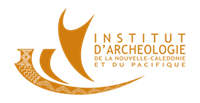

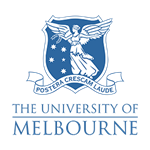

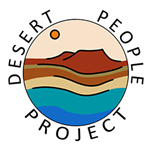
Berndt Museum
